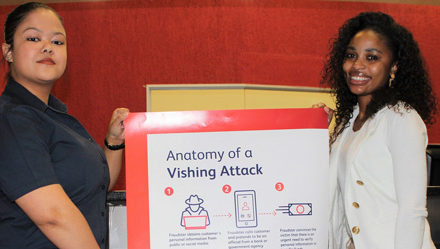
Two critical undersea cables carrying Africa’s internet knocked out

An undersea landslide in one of the world’s longest submarine canyons, according to network observability, network monitoring, and anomaly detection company, Kentik, knocked out two of the most important submarine cables supplying the African internet earlier this month.
The landslide took place in the Congo Canyon, located at the mouth of the Congo River, separating Angola from the Democratic Republic of the Congo.
According to Doug Madory, Kentik’s Director of Internet Analysis, the SAT-3 cable was the first to suffer an outage, followed by the WACS cable hours later. “The loss of these cables knocked out international internet bandwidth along the west coast of Africa,” he added.
He said Namibia was another country in southwest Africa affected by the cable disruptions. Telecom Namibia (AS20459) lost transit from Cogent (AS174) and BICS (AS6774) when WACS was interrupted at 17:30 UTC.
Madory further noted that the Namibian incumbent partially restored service two hours later, utilising transit from Angola to the south.
“Kentik Market Intelligence (KMI) also reported on these changes. KMI, based on BGP, enables users to navigate the dynamics hidden in the global routing table by identifying the ASes operating in any given country, determining their providers, customers, and peers, and reporting when there are changes to those relationships. Telecom Namibia lost its two transit providers, Cogent (AS174) and BICS (AS6774), due to the WACS cable cut, and to restore service, it had to activate emergency service from Angola Cables (AS37468). Those developments were reported in KMI Insights,” observed Madory.
Accordingly, on 06 August, Telecom lost AS174 and AS6774 at 17:30 UTC and acquired transit from AS37468 around 22:00 UTC. In the meantime, the route’s reachability became very low as traffic reached its destination.
“At the time of the cuts, the cable repair ship operating in the region (CS Leon Thevenin) was busy with submarine cable work in West Africa but has since shifted its mission and set sail for Cape Town, South Africa. Once on location, the repairs may take additional weeks to complete, leaving a significant portion of the African internet without critical internet bandwidth well into September,” Madory noted.
To compensate for the capacity loss, Madory said, traffic was shifted to other undersea cables, such as Google’s new Equiano cable, which was activated earlier this year.
“Equiano, like WACS and SAT-3, travels along Africa’s west coast but was not impacted by the underwater landslide earlier this month. Equiano client Liquid Dataport (previously Liquid Telecom) highlighted this in a news release this month. Liquid has been able to fill the voids caused by the loss of WACS and SAT-3 by using its service on Equiano.”
“Last year, a terrestrial cable cut in Egypt temporarily knocked out service for multiple submarine cables, a situation I analyzed by illustrating the impact on internal connectivity for the three major public cloud providers: AWS, Azure, and Google Cloud. That cable incident was no different, proving that even the big hyperscalers must rely on the same submarine cable infrastructure as everybody else,” he said.
“In addition, this is not the first time that such cables (SAT-3 and WACS) have been downed by undersea landslides in the Congo Canyon. A study published in June 2021 described how these cables suffered breaks in 2020 due to, in one instance, “an exceptionally large and powerful submarine mudslide that originated at the mouth of the Congo River.”
“The greatest threat to the submarine cables connecting the global internet is human maritime activity. This usually involves seafaring vessels breaking submarine cables either by snagging them during fishing operations (especially trawling) or inadvertently dragging their anchors along the seafloor. But after marine activity, the next biggest category of threat consists of natural causes — and let me emphasize, I’m not talking about sharks biting cables. On numerous occasions, undersea landslides and earthquakes have damaged cables laying on the seafloor,” according to Madory.












































